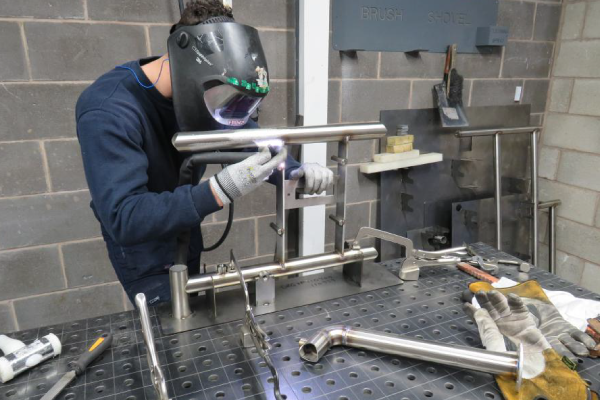
Steel Fabrication and its General Applications
Steel FabricationIn the current scenario, you name an industry and it requires a steel fabrication. Steel is highly ductile and malleable. Its metallurgical properties enable it to be fabricated into any shape and size with ease. Structural steel frames provide flexibility to even incorporate last-minute changes in the structure and there won't be a problem with it. Compared to other metals such as copper, aluminium, and magnesium, structural steel is cost-effective as well. This is one of the reasons as to why structural steel frames are preferred over reinforced concrete. Components of structural steel are easy to install after fabrication. Increased efficiency in the installation process is yet another positive factor for steel. A considerable amount of money and time is also saved by using steel.
What Is Steel Fabrication?
Steel fabrication involves taking raw materials and shaping them to desired formats. The most common of these are folding, cutting, shearing, punching, machining, welding, and stamping. Steel structures are fabricated by welding or bolting them together. A skilled technician with experience in tackling raw components and transforming them into marketable items is required for this since there is often very little room for error. Steel fabrication is largely used by industries for creating almost everything ranging from household appliances to large-scale machinery and others.

Types of Fabrication Processes
Cutting : Cutting is the most important, although it is a common job in metal fabrication. During this process, a metal sheet has to be split into various sizes and shapes which will be assembled later according to requirement.
Shearing : Shearing on the other side is the process where long cuts are required from long sheets for the fabrication job.
Folding : This is a process where metal surfaces are manipulated. This is done to provide shape at an angle. The procedure requires high tech equipment and machines for performance. It is extremely difficult to bring quality during fabrication since the metal fold surface requires assembling the two parts at a certain angle.
Punching : Comparatively, this process is quite simple. It involves forming holes within a metal piece that are required for fabrication. These punching holes later useful for the installation of fabricated members at the site.
Welding : Welding is a process of heating two metals at a suitable temperature to make a fusion. The welding process is used for joining sheets, metal pipes, structural steel, and tubes. Welding is an important process of fabrication.
Stamping : Stamping is making mark numbers on the fabricated members for the identification at the erection site.
Metal fabrication, in engineering, plays a great role. Metal refers to the building of metallic structures. A variety of processes are involved in molding raw steel plates produced from the factory to the desired shape of an engineer. Various metals can be utilized in fabrication based on need and material functionality. These include steel, aluminum and other types of ferrous and non-ferrous metals that are utilized in the process of fabrication.
Steel Fabrication Applications
Construction: The world is moving from concrete constructions to steel constructions. Be it, Building or Industrial shed or Bridge or commercial complex, every steel structure requires fabrication. The fabricators produce members such as columns, beams, girders, braces, joists, struts, purlins, ladders, staircases, handrails and all kinds of megastructures. Steel fabrication now has become an integral part of a construction process.
Aerospace : Manufacture of all kinds of aircraft, commercial flights to defence aircraft requires metal fabrication. Every part of the system needs the utmost care and precision. At every stage of production, metal sections are fabricated, assembled and integrated.
Energy : Metal fabrication is widely used in the sectors such as Oil & Gas, Wind Energy, Nuclear Energy, Solar Energy, Biomass, etc., Some of the products that require fabrication include turbines for Wind Energy, Wells, and platforms for Oil & Gas, Module mounting system for solar structures. Other products include transformer cores, electro-magnetic shields, electromagnets, transmission towers, container vessels and many more.
Mining : The mining process involves a lot of machinery which could impart higher strength and pressure which are produced by fabrication. The Equipment which also requires fabrication includes shovels, loaders, draglines, trucks and steel sections include grading, pipes, fittings, rods, and rails.
Ship Building : The Shipbuilding industry requires various equipment like flooring & gratings, ladders, conveyance tubing, stairs, and platforms. Fabrication is also needed for the regular maintenance of ships.
Few other industries that require metal fabrication are storage containers for food processing, reactor vessels for the pharmaceutical industry, equipment for automobile industry, storage racks for warehouses, pressure vessels and storage tanks for chemical processing industries and many more. Well, fabricated metal structures will take us a long way and avoid wastage and develop fine quality products displaying high tolerance levels. This blog only intends to give you a brief of the metal fabrication applications, where they are limitless and it can do everything an engineer can imagine.